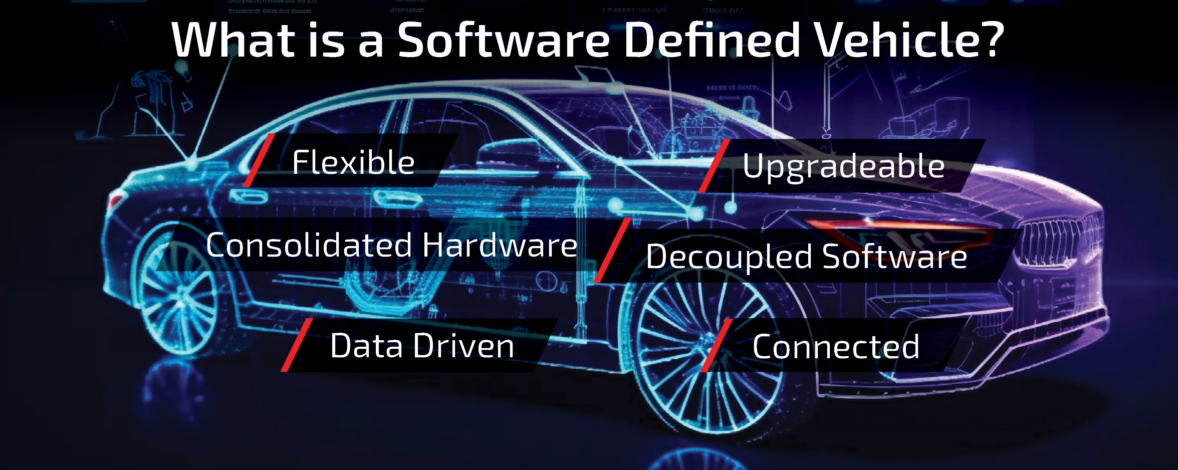What is a Software Defined Vehicle?
These days, the automotive industry is talking about software-defined vehicles (SDVs), but not everyone understands what this means. Don’t all vehicles already have automotive software inside?
They do, but software defined vehicles use automotive software in much more powerful ways. The fundamental functions of software defined vehicles are provided by software on top of advanced hardware resources and a modern operating system. Contrast this with the many single, fixed-function hardware blocks and sensors in cars of the past. Software defined vehicles are more flexible and upgradeable, use and share data, and are connected to the cloud. This means they can be improved over time, similar to what customers expect from other digital devices. It also enables the auto industry to unlock new business models, features, and functionality over the vehicle life cycle through software.
These may not seem like significant differences, but they are incredibly important, bringing benefits and opportunities to both vehicle manufacturers and consumers. In this blog, I shed some light on what are the critical aspects needed to build as OEMs are developing software defined vehicles.
Software Defined Vehicles: Flexible and Upgradable
Adding functions over time
A critical aspect of software-defined vehicles is their ability to be flexible and enable ongoing software development. Historically, vehicles were designed to have specific features and functions when they rolled off the assembly line, and that was all they could do for their entire life. Contrast that with consumers’ expectations of upgradable software in their other smartphones, where they have come to expect technology that improves and has gradual transformation to new features.
Could you imagine if your smartphone was fixed and could not be updated with new capabilities and features? While manufacturers like Tesla are famous for their automated driving, more importantly, it has shown that the ability to improve vehicles through software is a key value to its customers compared to other vehicles from the past that cannot.
Over-the-air (OTA) updates
A software defined vehicle provides an extensible software platform that can be continuously upgraded to add functions and new services after production that were not anticipated in advance through software updates. This flexibility empowers car manufacturers, service providers, and others to add functions and improvements to cars after production through software. The result for consumers is a better user experience, where the car they purchased improves, fixes problems, and delivers experiences that weren’t thought of at purchase. I like to say that we need to design vehicles to deliver features in the future that we have not thought of today. To do that, we need flexible and upgradable vehicles, which increasingly means delivering new features through software development.
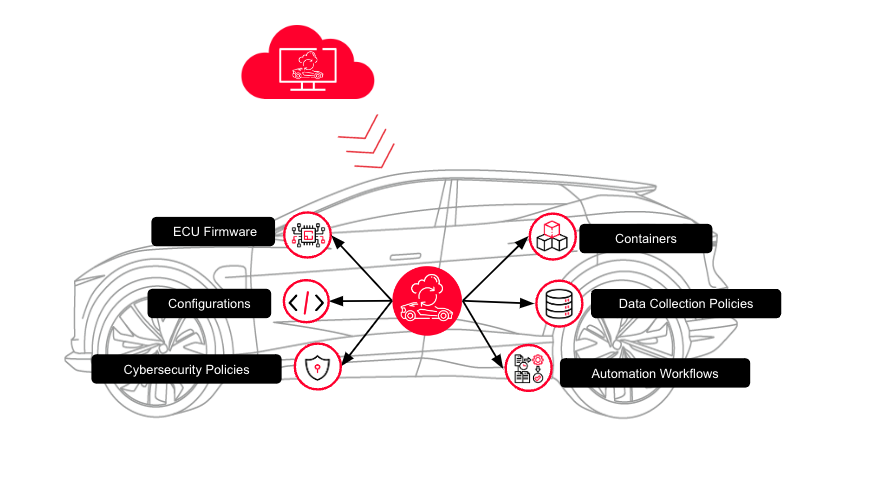
Over-the-air updates are a powerful tool that is growing in popularity in the automotive industry, especially following the lead of Tesla, Mercedes-Benz, Hyundai, and others, which are actively offering vehicle software updates. To achieve this gradual transformation through software, it requires the underlying hardware to anticipate future over-the-air updates and to include hardware technology that allows ongoing development after manufacture. While many OEMs may not be ready for a fully open technology platform and may be concerned about connecting to external systems for cybersecurity, there still remains the opportunity for software updates over time that can integrate seamlessly with existing vehicle systems if the vehicle was designed in advance to be upgradable.
New business models
A universal focus across the automotive industry is understanding how upgradable software can unlock new business models and functionality. Vehicle software offers the potential to provide new capabilities to drivers, whether through their infotainment system or vehicle apps. For example, it isn’t easy to find vehicles that do not offer music streaming, while only a few years ago, this integration was very new. Software defined vehicles offer the automotive industry the flexibility to respond to new trends as they arrive and offer new features that customers demand, similar to their experience with smartphones.
Connecting vehicles with smartphone apps
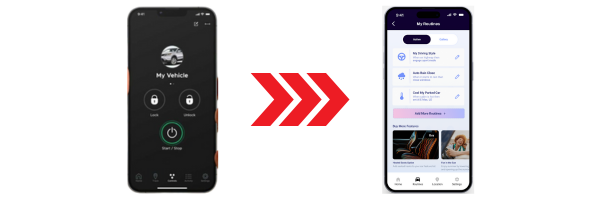
Another example is connected services (or connected car services). Some modern cars have vehicle apps that allow remote door lock, location, and other simple settings. A modern software architecture can enable vehicle manufacturers to extend connected services with much more powerful capabilities, either in an app or the infotainment system. These features may be offered for free for driver loyalty, or manufacturers can deploy software and charge for new functions to improve their revenue streams. Whether for free or fee, a software defined vehicle can deliver increased value over time for vehicles through software that benefits the driver and the industry overall.
Software Defined Vehicle Electrical and Electronic Architecture
The shift to a software defined vehicle is tightly linked with the automotive industry’s evolution of vehicle electrical and electronic architecture. As the vehicle architecture evolves, it unlocks the ability to use software in powerful new ways. Let’s begin by considering some key hardware changes in software defined vehicles.
Based on modern networks
One critical element to enabling this flexibility is networking. Legacy vehicles were implemented with hard-wired connections over networking standards like CAN (Controller Area Network), which fixed specific data sources to destinations at design time. This has a number of key weaknesses.
First, fixed connections are not changeable after production, so new capabilities may be impossible because needed systems may not be accessible. Second, the wiring of conventional vehicles is unbelievably heavy: typically, the third heaviest part of a vehicle is all of the wiring alone! This wiring is also difficult to assemble, requiring extensive physical labor to route thick bundles of wire through channels in the car. Finally, these networks are challenging to diagnose; if one of the wires fails or is damaged, such as by a collision, it may be difficult to identify the problem and challenging or impossible to repair.
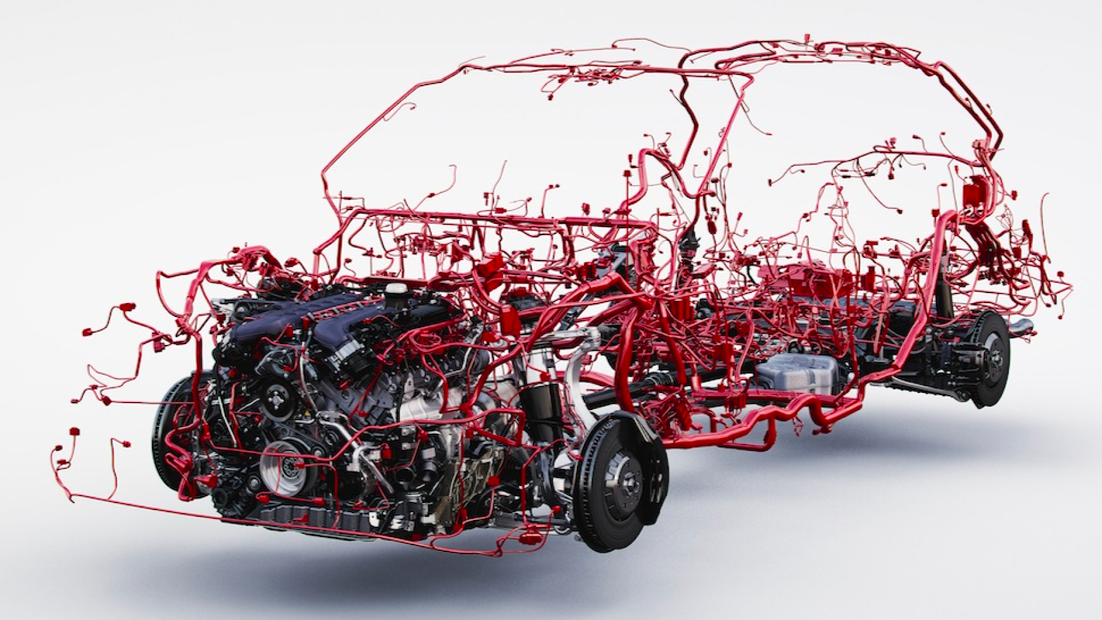
Automotive ethernet simplifies vehicle development
In contrast, software defined vehicles adopt dynamic modern networking technologies. New computer networking standards like Automotive Ethernet allow vehicles to have flexible connectivity, programmable by software, especially around the important sources of information coming to and from the vehicle. SDVs can borrow from software defined networking while adding additional requirements to that ensure safety-critical traffic is prioritized and resiliency is built in.
Ethernet is a shared resource, so it is no longer required to run point-to-point connections between different subsystems. This change reduces the total weight of the wires, improves assembly complexity, and improves vehicle efficiency. Ethernet allows easier development and debugging, making it easy to determine the location of faults and more possible to diagnose and repair problems, in some cases purely through software.
Sonatus provides fundamental software technologies to enable modern networking in our multifaceted Sonatus Foundation product, which allows connections to be added, adjusted, and improved over the life cycle.
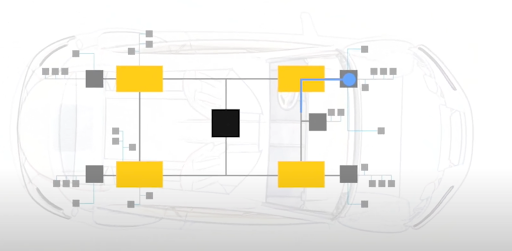
Consolidated hardware and software coexistence
A second critical shift in a software defined vehicle is evolving the vehicle architecture with hardware compute capabilities that enable the kind of upgradability described earlier. Classically, vehicle electronics were implemented with many fully integrated individual Electronic Control Units (ECUs), which are physical components of hardware boxes and their associated embedded software that carry out a single function, such as managing the windows, climate control, or braking. That box – often literally and figuratively a “black box” – did not change over its lifetime and only carried out that single function. Not only is that approach expensive, heavy, and difficult to manage, but it is also a barrier to upgradability and ongoing development.
Instead, software defined vehicles adopt fewer, more consolidated computing hardware units that run multiple tasks, not unlike how your computer or smartphone is running more than one application at the same time. Through techniques like employing a modern embedded operating system, virtualization, hypervisors, and application containers, these applications can share the hardware resources and run side by side while not interfering with each other. This evolution of the software platform significantly simplifies vehicle design, reduces weight and assembly complexity, and fundamentally unlocks the ability to add new capabilities over time.
Consolidation can reduce total cost
A common misconception is that costs for vehicle manufacturers will increase as they add the required technology, but the reality is likely the opposite. While there is increased software development involved in a software defined vehicle, and while individual electronic systems may be more expensive to deploy more computing power, the overall cost of the hardware in the vehicle may be significantly reduced. Given that conventional vehicles may have as many as 150 ECUs to serve the various sensors, safety requirements, and convenience features, reducing the total number of ECUs in cars can offer significant hardware savings. While the development of software by car companies and their suppliers is more complex, the overall CapEx and OpEx cost to vehicle manufacturers is reduced.
Data driven innovation in Software Defined Vehicles
Modern vehicles have hundreds of sensors that produce a massive amount of data from inside the vehicle. Also, drivers expect a range of data coming to them from outside the car, ranging from streaming audio, navigation, real-time traffic, and – in the future – even communication from other nearby vehicles or infrastructure. The challenge for the industry in both directions is managing the sheer volume, which can dwarf the ability to send it over LTE networks and store it. According to McKinsey, a car can produce around 25 gigabytes of data per hour.
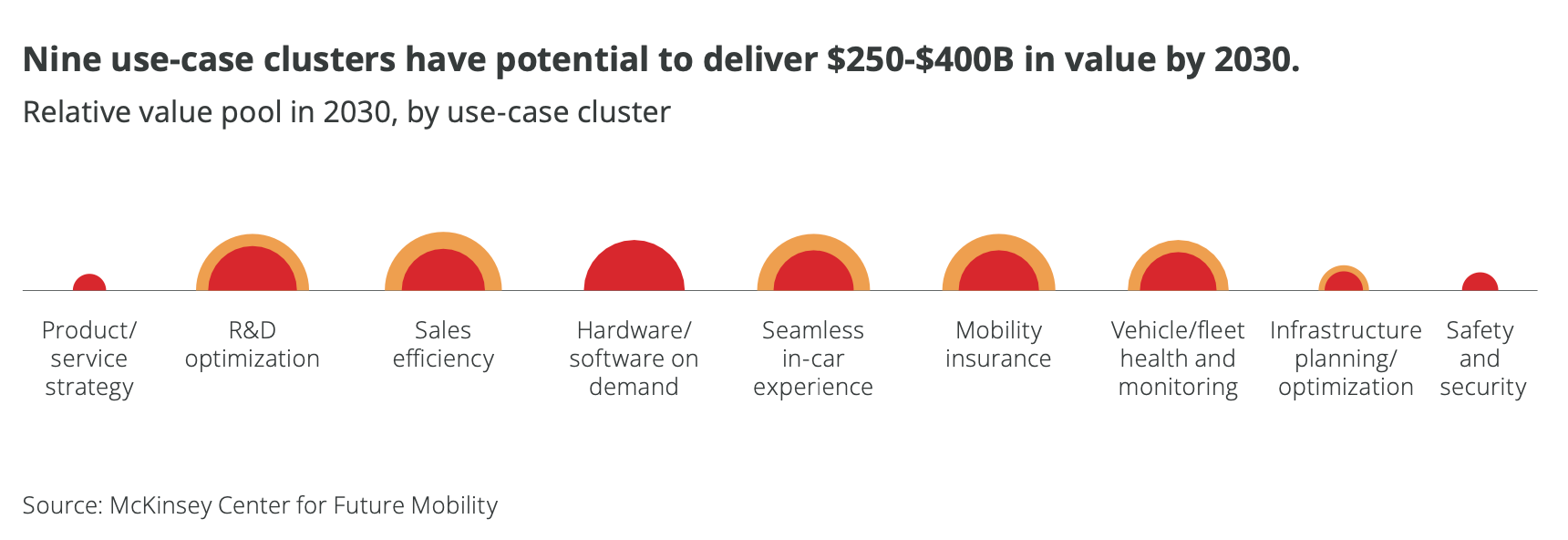
Moreover, not all vehicle data is equally useful, such as repeatedly reporting “All systems OK in system #723” every 50 milliseconds. Far more useful is to detect patterns of problems that warrant detailed reporting to enable proactive action or preventative maintenance. This demands software solutions that can ask targeted questions about vehicle data and refine those inquiries rapidly. This ability to make fine-grained inquiries about vehicle data is one of the unique benefits of Sonatus Collector AI.
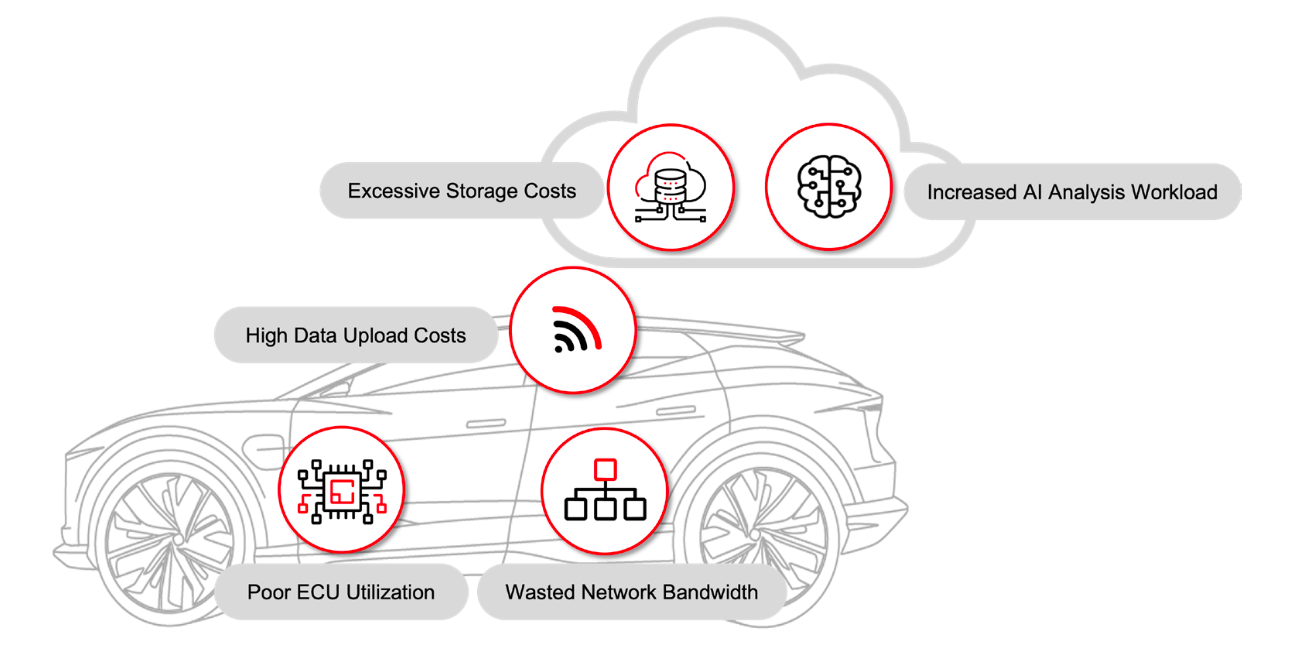
SDVs are connected vehicles
With all this discussion of data, the fourth key characteristic of a software defined vehicle is that it is connected. Today, vehicles are increasingly connected to provide specific services like in-vehicle WiFi, streaming services, or real-time traffic information. That integration is a good start, but providing continuous connectivity to the cloud can unlock development of features that would not be possible without it.
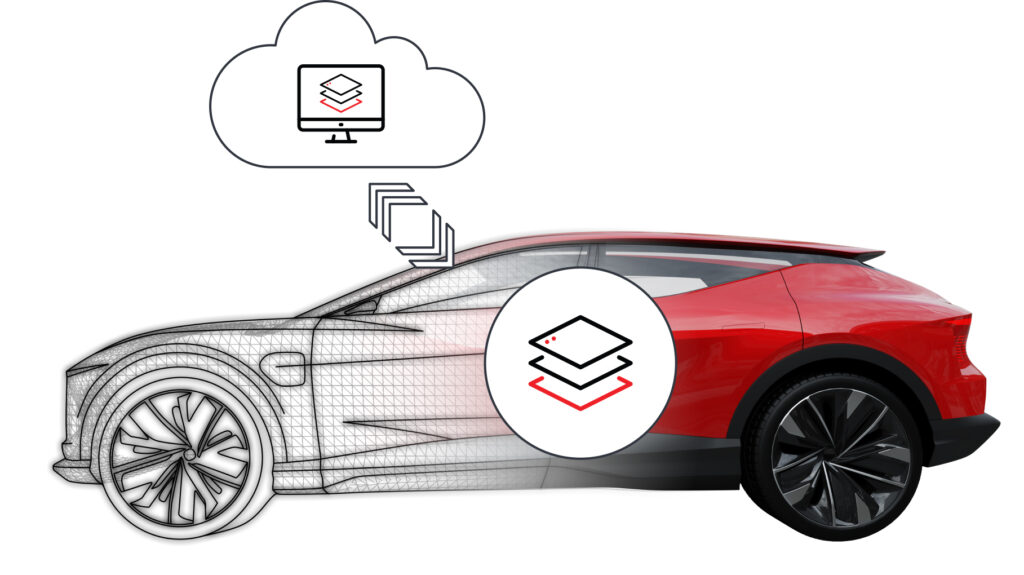
The cloud offers a natural place to capture the valuable vehicle data mentioned earlier and offers rich computation, including artificial intelligence, to detect important patterns with software that could indicate underlying problems. Cloud systems are integral to automated driving (ADAS) and more advanced autonomous driving, but that is only one benefit of the cloud.

The cloud also offers a rich platform to deliver entertainment and content services to users, a trend that will only increase in importance as higher levels of driving autonomy allow drivers and passengers to enjoy richer news, information, and entertainment services as part of their everyday driving experience. The cloud also promotes development and prototyping of software code more quickly. Sonatus is collaborating with leading cloud providers such as AWS, Google Cloud, as well as OEMs’ private clouds to enable many of these improvements and increase the value that connectivity can provide compared to unconnected vehicles of the past.
Likewise, the industry has long been moving towards the promise of vehicle-to-infrastructure communication, which offers the potential for vehicles to communicate seamlessly with fixed infrastructure like traffic signals as well as other vehicles for collective optimization of road usage and improving safety.
A connected vehicle with the ability to do over-the-air updates also offers unexpected benefits like improved vehicle performance. Using data collected from the vehicle combined with machine learning provides leading organizations the opportunity to tune key components over time to improve critical functions spanning a wide range of vehicle performance and safety like improving traction algorithms, battery algorithms, handling, ADAS safety features, and other advanced features. SDVs, if based on extensible software stacks and an embedded OS, have the ability to make these improvements over time.
Software Defined Vehicles are AI-ready
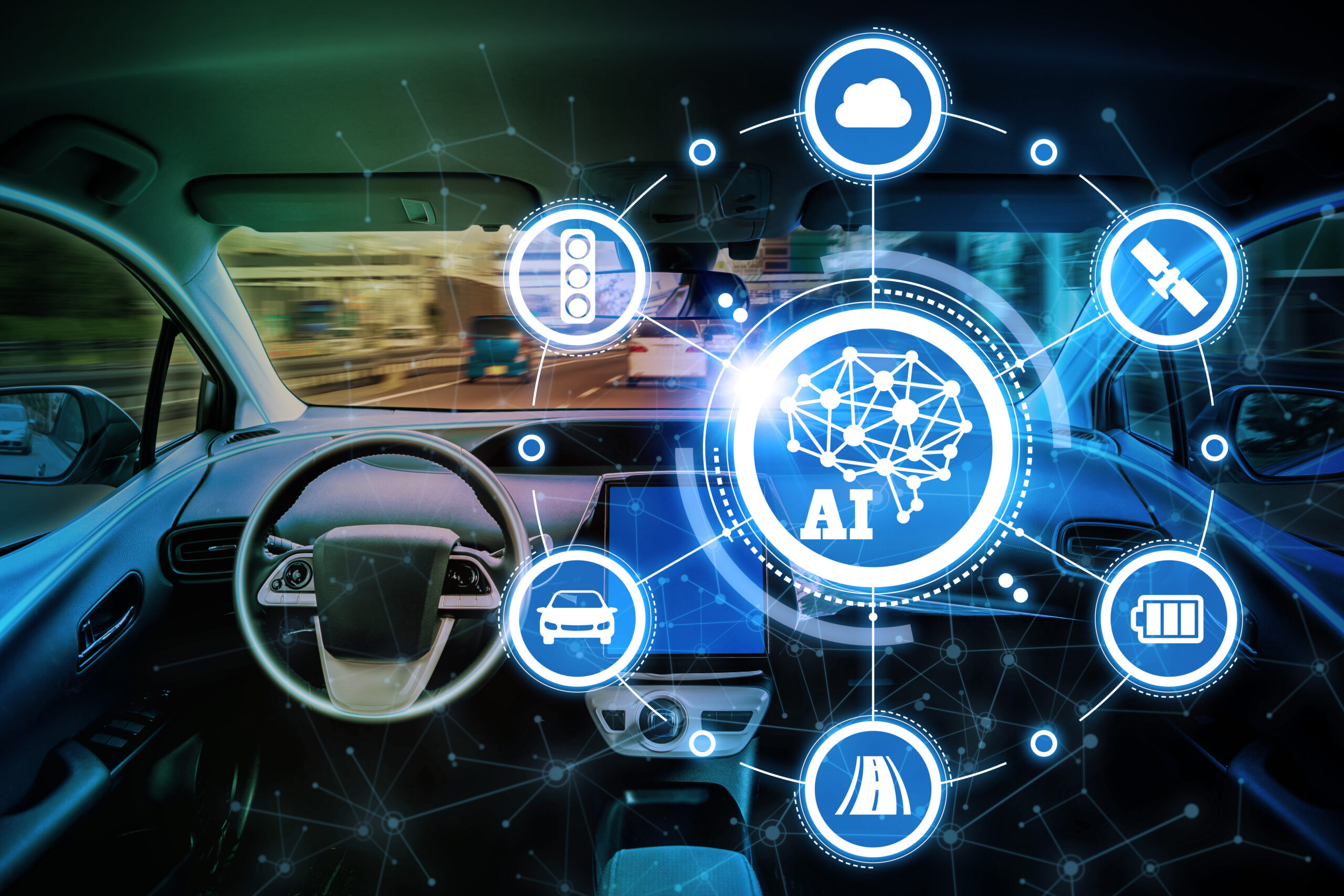
One of the most exciting new opportunities provided by SDVs is the powerful foundation they offer to enable deployment of artificial intelligence and machine learning into vehicles. The adoption of AI in automotive today is growing, though today, it is mostly limited to specific subsystems.
For example, advanced ADAS systems and their more capable cousin, Autonomous Driving, require extensive AI to detect other vehicles, pedestrians, and lane lines and do more advanced route planning. Similarly, some systems like driver monitoring/occupant monitoring can detect driver fatigue, inattention and so on, and are increasingly employing AI algorithms. Of course, cloud-based AI has been around for a while and leverages the significant data that SDVs can create. This enables analytics of some types in the cloud, which grows as more data is collected and uploaded.
However, as we look more broadly across the vehicle, AI is only in its infancy. The potential for AI in vehicles is much broader than just uploading everything to the cloud. In-vehicle assistant chatbots have become increasingly commonplace, providing a first layer of AI-based interaction with drivers. There is an opportunity for even more, with the potential to use AI for better preventative maintenance and problem detection. Sonatus has demonstrated how AI can be used to create an “AI Technician” that can help drivers or service technicians better understand vehicle problems more proactively.
AI can do even more, such as better analytics. Today, all data is shipped to the cloud for AI processing, but over time more AI can happen in the edge and in the vehicle, unlocking lower costs and more responsiveness to AI-based analysis. This is a rapidly evolving field and promises to be an exciting area of innovation. Read more about the opportunities and challenges of deploying vehicle AI in our recent blog post on this topic.
Conclusions for the Automotive Industry
A software defined vehicle unlocks the development of compelling new use cases and experiences, but achieving these benefits requires fundamental shifts towards: flexibility and upgradable software, consolidation of hardware, optimized data, and connectivity to the cloud. With these four critical characteristics, SDVs unlock new experiences and new value-adding services that may also generate OEM revenue and offer an exciting future ahead for OEMs and consumers alike.
Learn more in Sonatus podcasts
To learn more, Sonatus produces a video and audio podcast called “The Garage” covering advanced vehicle technology and the development of software defined vehicles. In the episode, “What is a Software Defined Vehicle?”, Sonatus CEO Jeff Chou and I discuss SDVs and key characteristics. You can find the podcast on our website, on YouTube, on Spotify or Apple Podcasts. Subscribe to Sonatus’ YouTube Channel to be notified of future episodes.
